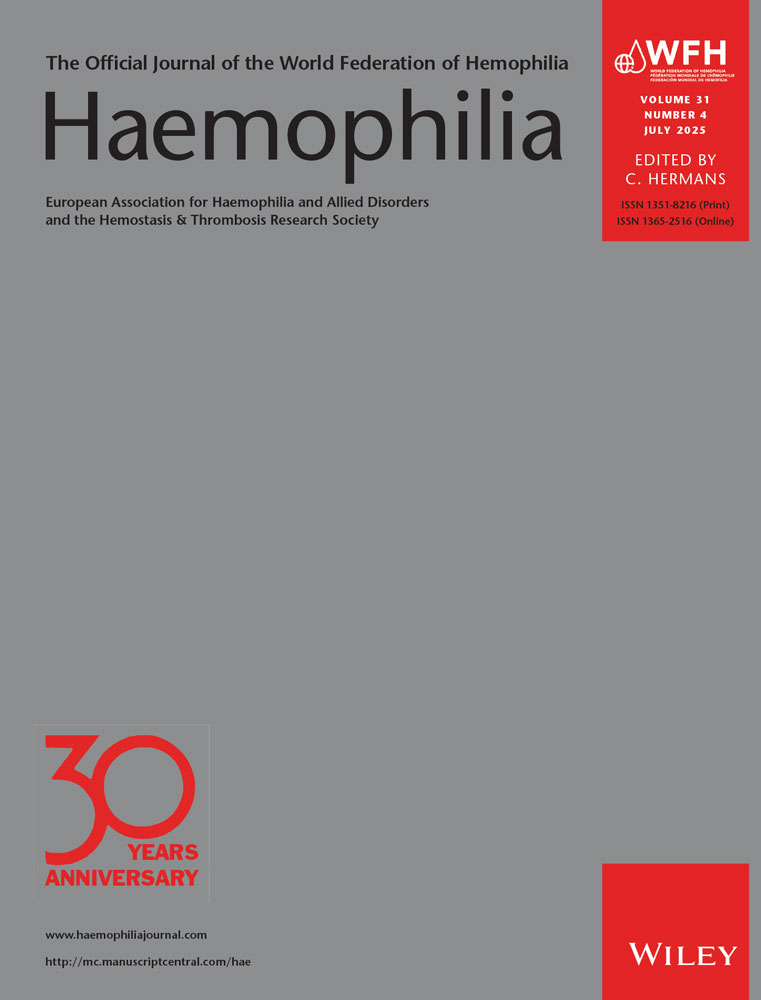Pharmacokinetics of recombinant factor IX in relation to age of the patient: implications for dosing in prophylaxis
Abstract
The aims of this study were to investigate possible age-related changes in the disposition of factor IX procoagulant activity (FIX:C) after administration of recombinant factor IX (rFIX) and to translate the pharmacokinetic findings into suggestions for dosing of rFIX during prophylactic treatment of haemophilia B. Pharmacokinetic data were available from a previous study on 56 patients, aged 4–56 years (one of whom was excluded from analysis). FIX:C curves during prophylactic dosing were computer-simulated from the single-dose data. Clearance and volume of distribution at steady state of FIX:C increased linearly with body weight of the patients, consequently increasing during childhood and adolescence but remaining fairly constant during adulthood. The terminal half-life of FIX:C showed no correlation with age, while in vivo recovery (in U dL–1 per U kg–1 given) tended to increase. Computer-predicted trough levels of exogenous FIX:C during repeated doses of rFIX (50 U kg–1) and, conversely, doses (in U kg–1) needed to maintain a 1-U dL–1 trough level showed little or no dependence on age. There was considerable interindividual variation in disposition and required doses of rFIX, emphasizing the need for individual dose titration. Dosing of rFIX according to lean body mass instead of body weight did not reduce this variability. During prophylaxis a 1-U dL–1 trough level can normally be maintained by dosing every 2–3 days, the former schedule resulting in, on average, a 45% lower consumption of rFIX.




